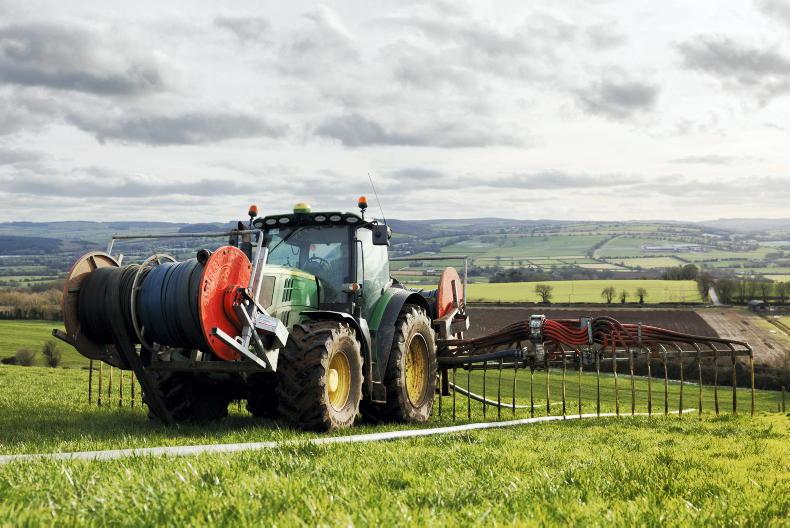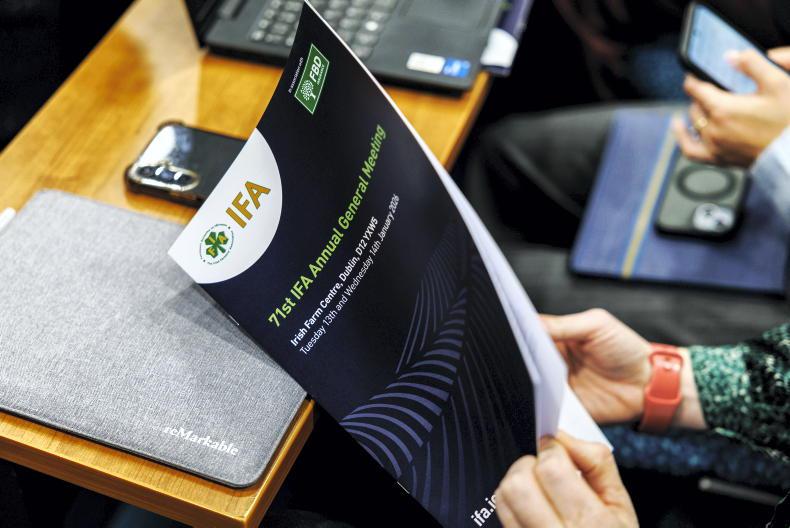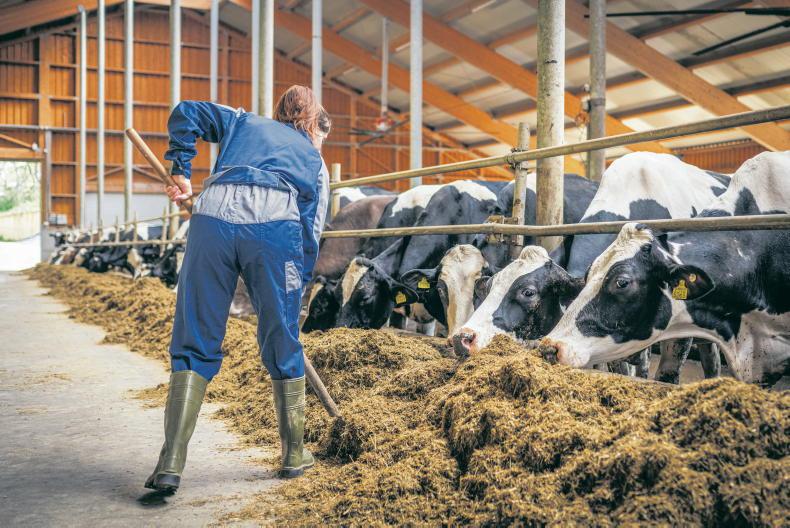Children or nieces/nephews due to be gifted or to inherit land often complete the Green Cert. Sometimes it is of benefit, but often it is of no benefit, especially if the intention is to lease out the land rather than farm it themselves.
There are certain tax and EU/Department of Agriculture scheme benefits associated with doing the Green Cert. Of course, there are many other benefits of doing the Green Cert too by providing a mix of theoretical and practical training. However most focus on the tax/scheme savings but these are only available in limited situations.
Stamp Duty
Stamp duty is payable on land transferred by “deed” such as a gift from parent to child or land being bought on the open market. The current rate of stamp duty on agricultural land is 7.5% of the market value of the land. If you take the average farm of 80ac valued at an average price of €9,000/ac** this equates to a stamp duty bill of €54,000. However, the Young Trained Farmer Stamp Duty Relief serves to reduce this stamp duty bill to €0.
To obtain the stamp duty relief, the following conditions must be satisfied:
The farmer (eg child/niece/nephew etc) must be under 35 years at the date of the transfer.The farmer must have the Green Cert. If they don’t have the Green Cert and they will turn 35 years of age before getting the Green Cert, they should have the land transferred before they are 35 years, pay the stamp duty and then claim a refund once they have the Green Cert. The farmer must undertake to spend not less than 50% of their normal working time farming the land for five years from the date of the transfer. For those working a 40-hour week, this typically translates to 20 hours per week farming.The farmer must have “My Farm My Plan” completed and certified by Teagasc prior to the date of the transfer. If the child cannot claim the young trained farmer relief, all is not lost and they might be entitled to claim another relief called “Consanguinity Relief” whereby the rate of stamp duty is 1% as opposed to 7.5%. Using our previous example of 80ac valued at €9,000/ac this equates to a stamp duty bill of €7,200. A child does not have to have the Green Cert to claim Consanguinity Relief. The obtain Consanguinity Relief, the following conditions must be satisfied:-
There must be a transfer of land between blood relatives.The farmer (child/niece/nephew etc) must either farm the land for 50% of their normal working time or lease to a farmer for six years from the date of the Deed of Transfer. If they intend to farm and they have the Green Cert they need not farm for 50% of their time but have to farm the land on a commercial basis with a view to the realisation of profit. The following scenarios illustrate where it may not be advisable to claim the Young Trained Farmer Stamp Duty Relief and thus may not be worth doing the Green Cert:
Where the stamp duty bill is €3,000 or less. For example a 50ac farm worth €6,000/ac gives a stamp duty bill of €3,000 if the person is entitled to claim Consanguinity Relief. As the Green Cert Distance Learning Course can cost in excess of €3,000 it negates the value of the stamp duty saving.If the child/niece/nephew etc does not intend to farm the land for 50% of their normal working time. Nowadays, a lot of children work full time off-farm and the income from farming can be taxed at the higher 40% rate so it is much more financially savvy to lease out the land and claim the Income Tax Lease exemption rather than farming it and suffering tax at in excess of 40% on any profit. The lease exemption gives a tax-free farm income up to €18,000 where the land is leased for five to seven years. This threshold rises the longer you lease it out with the top threshold being €40,000 where land is leased for 15 years or more.If the child/niece/nephew etc has already turned 35 years.Gift/inheritance tax
A child/favourite niece/nephew can be gifted/inherit up to €335,000 before they incur gift/inheritance tax. As the average family farm transfer, well exceeds this value, typically a child must qualify for either Agricultural Relief or Business Relief to avoid any gift/inheritance tax.
A condition of claiming Agricultural Relief is that the child/niece/nephew etc must either farm the land for six years or lease it to a farmer for six years. If the child does not have the Green Cert and they intend to farm it, they must spend 50% of their normal working time farming the land for six years from the date of the transfer. However in my experience, most people inheriting or being gifted farms working full time off-farm prefer to lease it out and claim the income tax lease exemption, so again there is no benefit to having done the Green Cert to claim Agricultural Relief in this scenario.
EU/Department of
Agriculture Scheme benefits
Young Farmer Top Up
A farmer has to have the Green Cert in order to claim the Young Farmer Top Up. This typically equates to a top up on entitlements of approximately €64/ha up to a maximum of 50ha ie €3,200 per year for a maximum of five years. So, it is useful to have the Green Cert in this scenario, assuming the person who inherited or was gifted the land is farming (as opposed to leasing it out) and there are entitlements going with the land.
Entitlements under the National Reserve
Again, a farmer has to have the Green Cert in order to claim entitlements under the National Reserve. However, more often than not, a young farmer will fall foul of the off-farm income limit especially if he/she is working off-farm full time. The young farmer’s gross off farm income for either of the preceding years (ie 2017 or 2018 for the National Reserve for 2019) must be less than €40,000 and they must submit documentation to vouch for this.
To claim entitlements under the national reserve, the land either has to have no entitlements (which would be unusual) or below the national average.
Registered Farm Partnership
Many parents/children wish to form Registered Farm Partnerships to avail of double the TAMS grant. Currently the TAMS grant would amount to 40% grant on maximum cap ex spend of €80,000 ie €32,000 grant. But by forming a registered farm partnership with a young trained farmer who has the Green Cert, the partnership can qualify for a further €48,000 grant on a further €80,000 Cap Ex spend.
So, a building costing €160,000 would qualify for a grant of €80,000 if an existing farmer forms a partnership with a young trained farmer.
To form a registered farm partnership there must be at least two people, one person from category (i) below and one or more person(s) from categories (i) or (ii):
(i) a person who has been engaged in the trade of farming on farm land owned or leased by that person, consisting of at least three hectares of useable farm land, for at least two years immediately preceding the date of formation of the partnership, and
(ii) a natural person with an appropriate agriculture qualifications ie the Green Cert whose contribution to the farm partnership entitles him/her to at least 20% of the profit sharing arrangement; and who works in the farm partnership for at least 10 hours per week.
So again a child does not have to have the Green Cert to form a Registered Farm Partnership but if they don’t they should be able to prove that they were farming in their own right for two years prior to forming the partnership ie by having a herd number in their own name. 
Aisling Meehan speaking at an ICMSA event on farm succession. \ Thomas O'Hanlon
If a young person is going to farm full time, I would certainly advise them to do the Green Cert at least but a third-level or full-time course at agricultural college would probably be more beneficial.
This would enable them to gain more practical and academic experience.
If a young person is not planning on farming the land instead preferring to lease it out, there is probably not much benefit to them doing the Green Cert.
If a young person intends to farm part time, the circumstances of each scenario will dictate whether it is worth doing the Green Cert or not.
For example if the land to be transferred is worth more than €400,000 and the person will have the Green Cert and the land transferred before they are 35 years of age, there is a financial gain from doing the Green Cert.
However this must be weighed up against the time constraints in actually doing the course. Factor in doing course work and practical days while juggling a full-time job and small kids and the cost savings might be quickly eroded. Further information on the courses available at www.teagasc.ie/publications/2019/green-cert-options.php
* Based on 2016 CSO figures
** Irish Farmers Journal Agricultural Land Price Report for 2018
Disclaimer: The information in this article is intended as a general guide only. While every care is taken to ensure accuracy of information contained in this article, Aisling Meehan, agricultural solicitors does not accept responsibility for errors or omissions howsoever arising.
email aisling@agriculturalsolicitors.ie
Children or nieces/nephews due to be gifted or to inherit land often complete the Green Cert. Sometimes it is of benefit, but often it is of no benefit, especially if the intention is to lease out the land rather than farm it themselves.
There are certain tax and EU/Department of Agriculture scheme benefits associated with doing the Green Cert. Of course, there are many other benefits of doing the Green Cert too by providing a mix of theoretical and practical training. However most focus on the tax/scheme savings but these are only available in limited situations.
Stamp Duty
Stamp duty is payable on land transferred by “deed” such as a gift from parent to child or land being bought on the open market. The current rate of stamp duty on agricultural land is 7.5% of the market value of the land. If you take the average farm of 80ac valued at an average price of €9,000/ac** this equates to a stamp duty bill of €54,000. However, the Young Trained Farmer Stamp Duty Relief serves to reduce this stamp duty bill to €0.
To obtain the stamp duty relief, the following conditions must be satisfied:
The farmer (eg child/niece/nephew etc) must be under 35 years at the date of the transfer.The farmer must have the Green Cert. If they don’t have the Green Cert and they will turn 35 years of age before getting the Green Cert, they should have the land transferred before they are 35 years, pay the stamp duty and then claim a refund once they have the Green Cert. The farmer must undertake to spend not less than 50% of their normal working time farming the land for five years from the date of the transfer. For those working a 40-hour week, this typically translates to 20 hours per week farming.The farmer must have “My Farm My Plan” completed and certified by Teagasc prior to the date of the transfer. If the child cannot claim the young trained farmer relief, all is not lost and they might be entitled to claim another relief called “Consanguinity Relief” whereby the rate of stamp duty is 1% as opposed to 7.5%. Using our previous example of 80ac valued at €9,000/ac this equates to a stamp duty bill of €7,200. A child does not have to have the Green Cert to claim Consanguinity Relief. The obtain Consanguinity Relief, the following conditions must be satisfied:-
There must be a transfer of land between blood relatives.The farmer (child/niece/nephew etc) must either farm the land for 50% of their normal working time or lease to a farmer for six years from the date of the Deed of Transfer. If they intend to farm and they have the Green Cert they need not farm for 50% of their time but have to farm the land on a commercial basis with a view to the realisation of profit. The following scenarios illustrate where it may not be advisable to claim the Young Trained Farmer Stamp Duty Relief and thus may not be worth doing the Green Cert:
Where the stamp duty bill is €3,000 or less. For example a 50ac farm worth €6,000/ac gives a stamp duty bill of €3,000 if the person is entitled to claim Consanguinity Relief. As the Green Cert Distance Learning Course can cost in excess of €3,000 it negates the value of the stamp duty saving.If the child/niece/nephew etc does not intend to farm the land for 50% of their normal working time. Nowadays, a lot of children work full time off-farm and the income from farming can be taxed at the higher 40% rate so it is much more financially savvy to lease out the land and claim the Income Tax Lease exemption rather than farming it and suffering tax at in excess of 40% on any profit. The lease exemption gives a tax-free farm income up to €18,000 where the land is leased for five to seven years. This threshold rises the longer you lease it out with the top threshold being €40,000 where land is leased for 15 years or more.If the child/niece/nephew etc has already turned 35 years.Gift/inheritance tax
A child/favourite niece/nephew can be gifted/inherit up to €335,000 before they incur gift/inheritance tax. As the average family farm transfer, well exceeds this value, typically a child must qualify for either Agricultural Relief or Business Relief to avoid any gift/inheritance tax.
A condition of claiming Agricultural Relief is that the child/niece/nephew etc must either farm the land for six years or lease it to a farmer for six years. If the child does not have the Green Cert and they intend to farm it, they must spend 50% of their normal working time farming the land for six years from the date of the transfer. However in my experience, most people inheriting or being gifted farms working full time off-farm prefer to lease it out and claim the income tax lease exemption, so again there is no benefit to having done the Green Cert to claim Agricultural Relief in this scenario.
EU/Department of
Agriculture Scheme benefits
Young Farmer Top Up
A farmer has to have the Green Cert in order to claim the Young Farmer Top Up. This typically equates to a top up on entitlements of approximately €64/ha up to a maximum of 50ha ie €3,200 per year for a maximum of five years. So, it is useful to have the Green Cert in this scenario, assuming the person who inherited or was gifted the land is farming (as opposed to leasing it out) and there are entitlements going with the land.
Entitlements under the National Reserve
Again, a farmer has to have the Green Cert in order to claim entitlements under the National Reserve. However, more often than not, a young farmer will fall foul of the off-farm income limit especially if he/she is working off-farm full time. The young farmer’s gross off farm income for either of the preceding years (ie 2017 or 2018 for the National Reserve for 2019) must be less than €40,000 and they must submit documentation to vouch for this.
To claim entitlements under the national reserve, the land either has to have no entitlements (which would be unusual) or below the national average.
Registered Farm Partnership
Many parents/children wish to form Registered Farm Partnerships to avail of double the TAMS grant. Currently the TAMS grant would amount to 40% grant on maximum cap ex spend of €80,000 ie €32,000 grant. But by forming a registered farm partnership with a young trained farmer who has the Green Cert, the partnership can qualify for a further €48,000 grant on a further €80,000 Cap Ex spend.
So, a building costing €160,000 would qualify for a grant of €80,000 if an existing farmer forms a partnership with a young trained farmer.
To form a registered farm partnership there must be at least two people, one person from category (i) below and one or more person(s) from categories (i) or (ii):
(i) a person who has been engaged in the trade of farming on farm land owned or leased by that person, consisting of at least three hectares of useable farm land, for at least two years immediately preceding the date of formation of the partnership, and
(ii) a natural person with an appropriate agriculture qualifications ie the Green Cert whose contribution to the farm partnership entitles him/her to at least 20% of the profit sharing arrangement; and who works in the farm partnership for at least 10 hours per week.
So again a child does not have to have the Green Cert to form a Registered Farm Partnership but if they don’t they should be able to prove that they were farming in their own right for two years prior to forming the partnership ie by having a herd number in their own name. 
Aisling Meehan speaking at an ICMSA event on farm succession. \ Thomas O'Hanlon
If a young person is going to farm full time, I would certainly advise them to do the Green Cert at least but a third-level or full-time course at agricultural college would probably be more beneficial.
This would enable them to gain more practical and academic experience.
If a young person is not planning on farming the land instead preferring to lease it out, there is probably not much benefit to them doing the Green Cert.
If a young person intends to farm part time, the circumstances of each scenario will dictate whether it is worth doing the Green Cert or not.
For example if the land to be transferred is worth more than €400,000 and the person will have the Green Cert and the land transferred before they are 35 years of age, there is a financial gain from doing the Green Cert.
However this must be weighed up against the time constraints in actually doing the course. Factor in doing course work and practical days while juggling a full-time job and small kids and the cost savings might be quickly eroded. Further information on the courses available at www.teagasc.ie/publications/2019/green-cert-options.php
* Based on 2016 CSO figures
** Irish Farmers Journal Agricultural Land Price Report for 2018
Disclaimer: The information in this article is intended as a general guide only. While every care is taken to ensure accuracy of information contained in this article, Aisling Meehan, agricultural solicitors does not accept responsibility for errors or omissions howsoever arising.
email aisling@agriculturalsolicitors.ie










SHARING OPTIONS